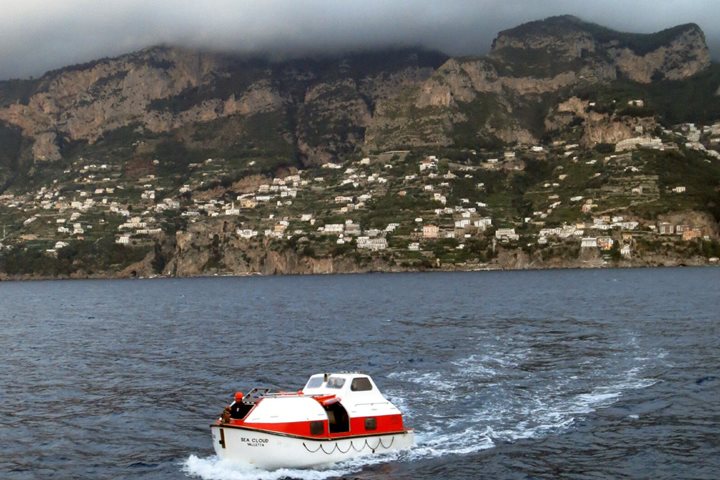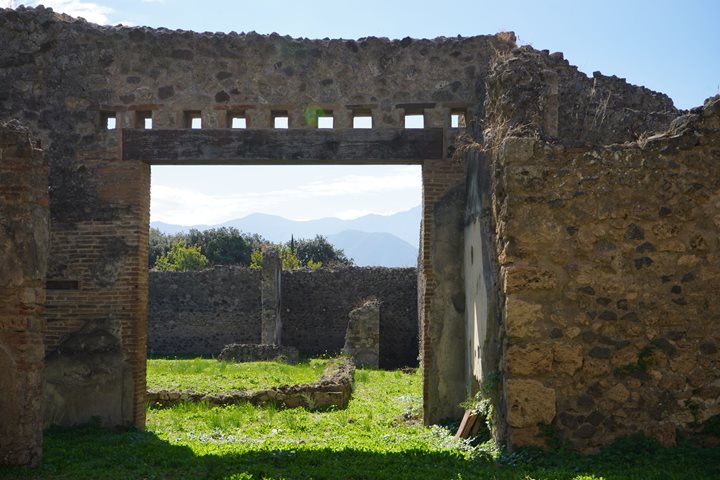We came abreast of the gleaming white façades of Amalfi and Ravello spilling down the mountain slopes. A lovely legend has it that Hercules buried his beloved nymph Amalfi here in the most beautiful place he knew. He was right. We boarded our coaches for the hair-raising climb up to the top of the mountain to the jewel-like village of Ravello.
Our first stop was the sumptuous Villa Rufolo. We visited the family rooms with exquisite multicolored majolica tiles and a genuine 12th-century kitchen. But the highlight of the villa visit was the gardens—palms, tree ferns, figs, roses, New Zealand impatience, varieties of geraniums, and more exploded from pots and flower beds. Wagner fell in love with the gardens of the Rufulo Villa and conducted a performance of Parsifal here. Our view from the balustrade, looking down at Amalfi, will live in our memories forever. After our visit, we joined our friends at the many cafés lining the central square.
Another highlight: our visit to the Ravello Cathedral. This great, late-11th-century church had fabulous, sculpted bronze doors covered with images from the Bible. Inside the cathedral, midway up the nave, was the most delightful green marble mosaic of Jonah being swallowed by a sea monster on the first panel and being spit out of the monster’s mouth on the second. The mosaic was a teaching device for the largely illiterate 11th-century population that the figure of Jonah is a type of Christ.
Our next stop, 1,000 feet below, was glittering Amalfi. Amalfi was one of the most powerful Italian city states in the 11th through 13th centuries, controlling a great deal of trade in the eastern Mediterranean. The city even minted its own coins. We had a brief tour of the main piazza and many of us made our way to the limoncello and gelato shops. Lemon and oranges love the climate and grow in abundance along the ravines and on the slopes of the region. Native Amalfians still walk up and down the mountainside or use donkeys to transport goods from the shore to their homes.
We returned to Sea Cloud around 1:00 p.m. for a delicious lunch, featuring fresh mozzarella di bufala. At 3:30 p.m., we heard a talk on the great plague of 1347, which first entered Western Europe through Messina, Sicily, and was the subject of great Italian medieval writer Giovanni Boccaccio’s Decameron. Boccaccio was a resident of Amalfi.
In the evening, we enjoyed a lovely dinner and had the pleasure of listening to our pianist, Gaynor Trammer, entertaining us with her vast repertoire of tunes. Tomorrow, we head to the Aeolian Islands.









